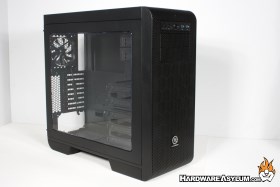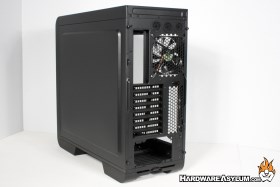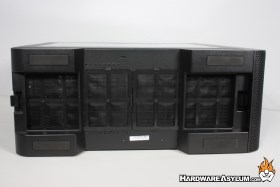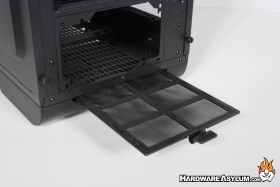Thermaltake Core V51 Case Review
Author: Dennis GarciaCase Layout and Features
Outward appearance is one of the big selling factors of a case and the Core V51 features an elegant curved bezel wrapped in metal mesh. The mesh is quite thick and covers the plastic parts of the bezel and also outline the two external drive bays.
Turning the case around we can see the layout of the motherboard in relation to the PSU and that the back of this case is nothing more than strategically placed mesh used to outline the I/O port and expansion slots. This is a common option for high airflow cases with low internal pressure.
If one was to knock over the Core V51 you would notice that most of the underside is not only open but also protected by several removable filters indicating that the bottom of the case is a primary air intake.
Given that the bottom is acting as an air intake you can fully expect to be cleaning these filters on a regular basis. To do this you simply unsnap the plastic clip and pull the filter out.
A common trend we have noticed is the apparent removal of the external 5.25” drive bay. While we tend to agree that the days of optical storage are dwindling that isn’t the only thing designed to go in these locations making their demise a little premature.
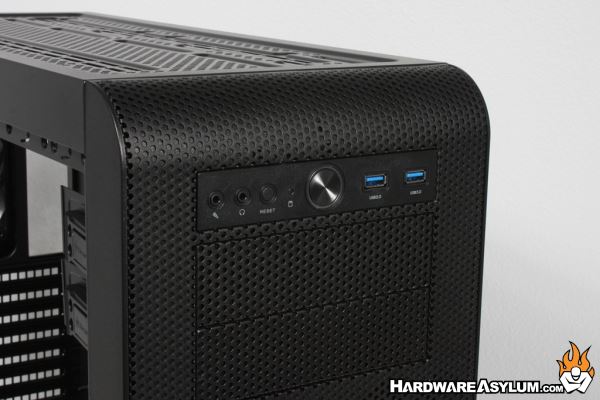
The Thermaltake Core V51 comes with two external drive bays under an included front accessory mount with two USB 3.0 ports, analog audio jacks and buttons for power and reset. The external drive bays come with tool less drive locks and share the same perforated metal finish so to blend into the front bezel
For hardware enthusiasts these external drive bays are quite valuable since they can hold more than optical storage including a variety of water reservoirs and digital fan controllers.

